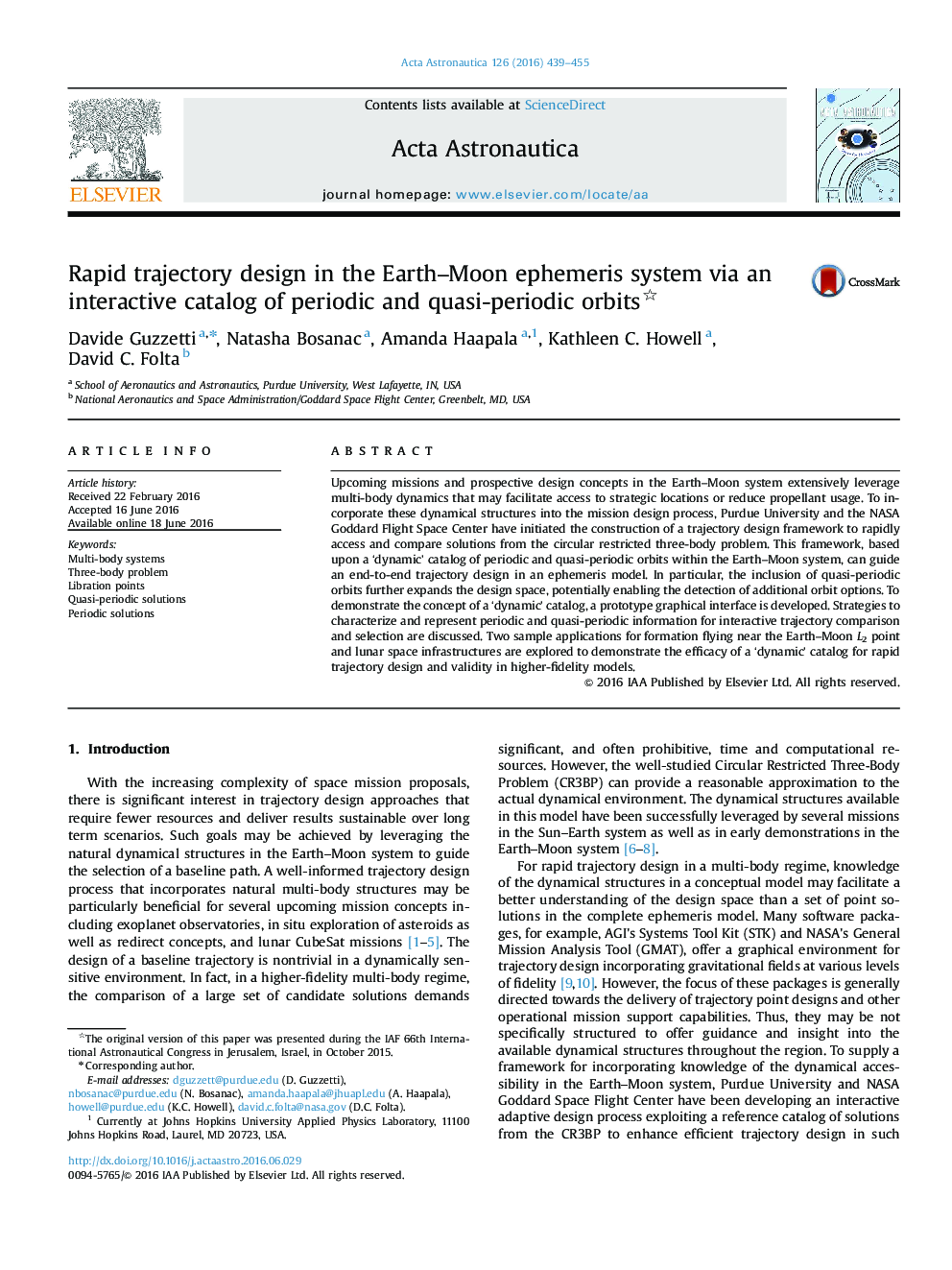| Article ID | Journal | Published Year | Pages | File Type |
|---|---|---|---|---|
| 8056178 | Acta Astronautica | 2016 | 17 Pages |
Abstract
Upcoming missions and prospective design concepts in the Earth-Moon system extensively leverage multi-body dynamics that may facilitate access to strategic locations or reduce propellant usage. To incorporate these dynamical structures into the mission design process, Purdue University and the NASA Goddard Flight Space Center have initiated the construction of a trajectory design framework to rapidly access and compare solutions from the circular restricted three-body problem. This framework, based upon a 'dynamic' catalog of periodic and quasi-periodic orbits within the Earth-Moon system, can guide an end-to-end trajectory design in an ephemeris model. In particular, the inclusion of quasi-periodic orbits further expands the design space, potentially enabling the detection of additional orbit options. To demonstrate the concept of a 'dynamic' catalog, a prototype graphical interface is developed. Strategies to characterize and represent periodic and quasi-periodic information for interactive trajectory comparison and selection are discussed. Two sample applications for formation flying near the Earth-Moon L2 point and lunar space infrastructures are explored to demonstrate the efficacy of a 'dynamic' catalog for rapid trajectory design and validity in higher-fidelity models.
Keywords
Related Topics
Physical Sciences and Engineering
Engineering
Aerospace Engineering
Authors
Davide Guzzetti, Natasha Bosanac, Amanda Haapala, Kathleen C. Howell, David C. Folta,
